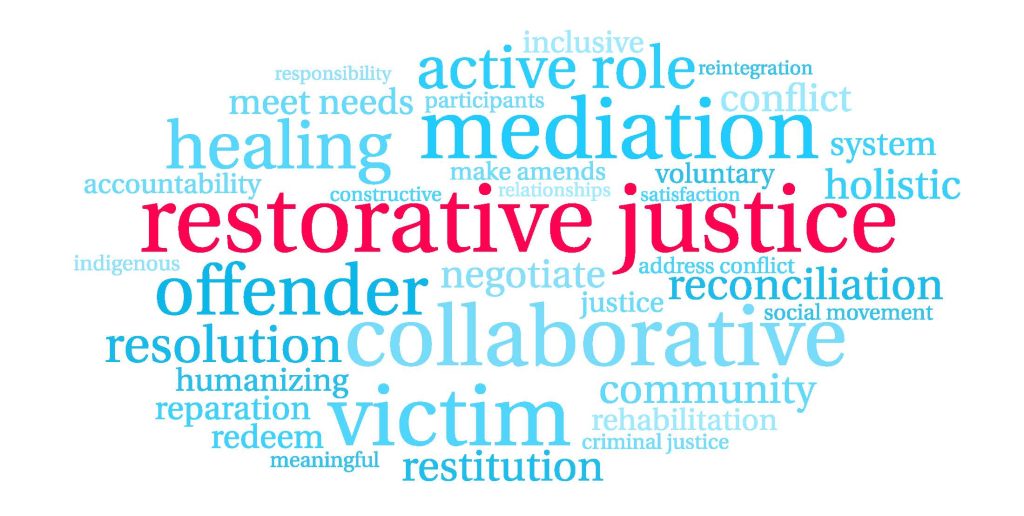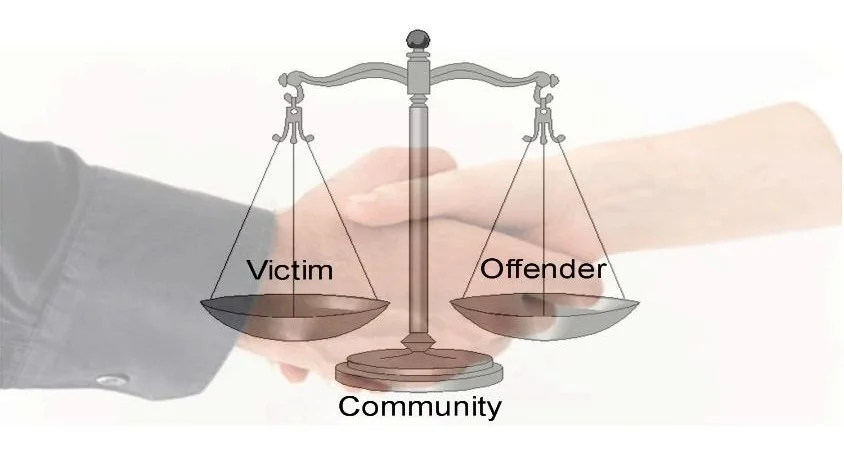How do you define justice? For many, justice is a fundamental concept in society, ensuring fairness, equality, and accountability. It serves as a cornerstone of legal systems worldwide, aiming to maintain social order and protect individual rights. However, the approaches to justice can vary significantly, leading to diverse outcomes and consequences.
Two primary approaches to justice have been widely debated and implemented: restorative justice and retributive justice. Both approaches seek to address wrongdoing and restore harmony in society, but they differ significantly in their underlying principles and methods.
The purpose of this discussion is to compare and contrast retributive vs. restorative justice, shedding light on their distinct features, advantages, and limitations. By exploring these two approaches, we can gain a deeper understanding of how justice is pursued and achieved in different contexts.
So, let’s delve into the principles and processes of restorative justice vs. retributive justice, highlighting their key differences and exploring their implications for individuals, communities, and society as a whole.
What is Restorative Justice?
Restorative justice is an approach to justice that doesn’t dwell on some obstruction of justice charge but instead focuses on repairing the harm caused by a crime or conflict. It seeks to involve all stakeholders, including victims, offenders, and the community, in a process that addresses the needs of everyone affected.
The core principles of restorative justice include the following:
- Inclusion: All individuals affected by the crime or conflict are given an opportunity to participate in the process.
- Dialogue: Restorative justice emphasizes open and honest communication between all parties involved. This dialogue allows for understanding, empathy, and the opportunity to express emotions and perspectives.
- Responsibility: The process encourages offenders to take responsibility for their actions and make amends to repair the harm caused. It aims to foster accountability and encourage offenders to reintegrate into the community.
- Repair: Restorative justice focuses on repairing the harm caused by the crime or conflict. It aims to address the needs of the victim and provide support for their healing while also promoting the growth and rehabilitation of the offender.
The goals of restorative justice are to repair the caused harm, foster accountability, and promote healing. Successful examples of restorative justice practices exist in various parts of the world:
- New Zealand: The country has a strong tradition of restorative justice, particularly in the youth justice system. The Family Group Conference model allows victims, offenders, and their families to come together to discuss the offense, its impact, and how to repair the harm caused.
- Canada: The restorative justice movement has gained traction in Canada, particularly within Indigenous communities. The use of talking circles, where participants sit in a circle and pass around a talking piece to facilitate open and respectful communication, has been successful in addressing conflicts and promoting healing.
- Rwanda: Following the 1994 genocide, Rwanda implemented restorative justice practices known as Gacaca courts. These community-based tribunals aimed to reconcile the nation by facilitating truth-telling, accountability, and reparations. The process allowed for the healing and reintegration of offenders into the community.
What is Retributive Justice?
Retributive justice is a theory of justice that is built on retribute, i.e., it emphasizes punishment as a response to wrongdoing. It is based on the principle that offenders deserve to be punished for their actions and that punishment should be proportionate to the severity of the crime committed.
The primary characteristics of retributive justice include the following:
- Deserved punishment : Retribution focuses on ensuring that offenders receive the punishment they deserve based on the harm they have caused. The severity of the punishment should be proportional to the seriousness of the crime.
- Moral judgment: Retributive justice involves making a moral judgment about the actions of the offender. It assumes that individuals have free will and are responsible for their choices, thereby holding them accountable for their actions.
- Individual focus: Retribution primarily concerns itself with the individual offender rather than considering the broader societal implications or addressing underlying causes of criminal behavior.
The goals of retributive justice are centered around punishment, deterrence, and maintaining social order. This system is commonly used worldwide, and retributive justice examples can be found in various countries:
- United States: The American criminal justice system is often considered retributive in nature, with a focus on punishment and the concept of “an eye for an eye.”
- Saudi Arabia: The legal system in Saudi Arabia is known for its strict adherence to retributive justice, implementing corporal punishments such as flogging and amputations.
- Singapore: Singapore has a reputation for its tough stance on crime, employing retributive punishments such as caning for certain offenses.
- Iran: The Iranian legal system is based on Islamic law, which includes retributive punishments such as flogging, amputation, and even the death penalty.
It is important to note that while retributive justice systems have their merits, they are also subject to criticism. Some argue that they prioritize punishment over rehabilitation and fail to address the root causes of crime. Consequently, alternative models of justice, such as restorative justice, have gained attention in recent years.
Comparison Of Restorative Justice And Retributive Justice
To compare these two terms, we’ll show you several points and how each system differs according to them.
- Focus and Purpose
Restorative justice focuses on repairing harm, promoting healing, and restoring relationships.
Retributive justice prioritizes punishment, deterrence, and retribution as a means of justice.
- Process
Restorative justice involves facilitated dialogues between victims, offenders, and community members to address the harm done and find mutually acceptable resolutions.
Retributive justice follows a formal legal process with an emphasis on proving guilt or innocence, assigning blame, and imposing predetermined punishments.
- Participants
Restorative justice includes victims, offenders, their supporters, and community members who are affected.
Retributive justice primarily involves legal professionals, including judges, lawyers, and law enforcement officials.
- Accountability
Restorative justice encourages personal accountability and responsibility by having offenders take active steps to repair harm and make amends.
Retributive justice focuses on external accountability through punishment imposed by the state.
- Healing
Restorative justice aims to address the emotional and psychological needs of victims, offenders, and the community by promoting healing, forgiveness, and reconciliation.
Retributive justice does not prioritize healing, instead focusing on punishment and isolation of offenders.
- Punitive Measures
Retributive justice relies on punitive measures such as imprisonment, fines, and probation as a means of punishment.
Restorative justice seeks alternative measures that prioritize rehabilitation, restitution, and community service.
- Community Involvement
Restorative justice emphasizes community participation, involving community members in the decision-making process and encouraging their support in the healing and restoration of relationships.
Retributive justice does not involve significant community involvement beyond serving as witnesses or jurors in criminal trials.
- Recidivism
Restorative justice has been found to reduce recidivism rates by addressing the root causes of offending behavior and promoting rehabilitation.
Retributive justice has a higher likelihood of contributing to recidivism, as punishment alone does not address underlying issues.
Conclusion
Retributive justice vs. restorative justice offers contrasting approaches to the criminal justice system. Restorative justice focuses on repairing harm, promoting healing, and reintegrating offenders into society, while retributive justice aims to punish and deter wrongdoing.
The choice between these approaches depends on the goals of the justice system and the desired outcomes. However, incorporating elements of both approaches can lead to a more balanced and effective justice system.
Ongoing dialogue and research are crucial to improving the justice system and fostering fairness, accountability, and community well-being.






